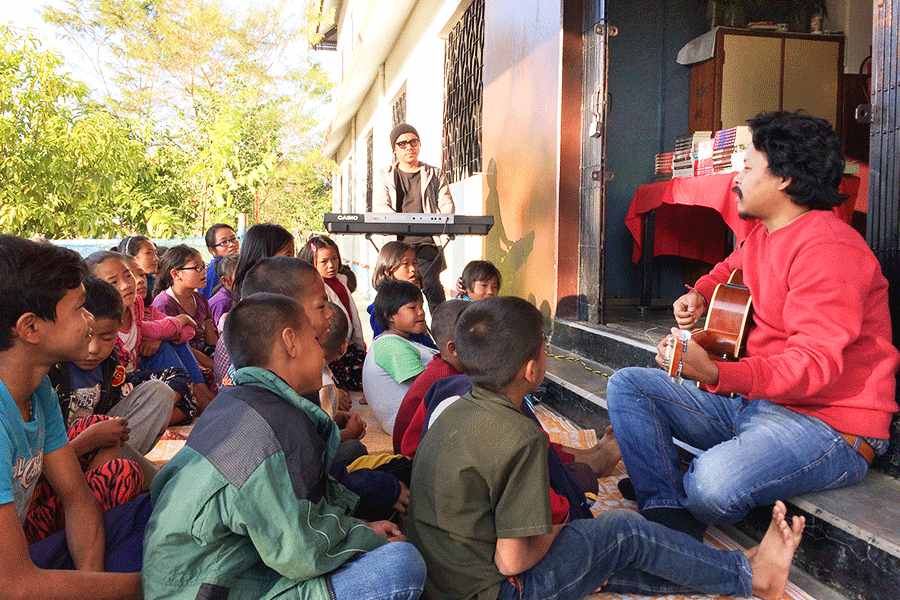 |
| Shyamal Bhattacharya in his office. Picture by Sanat Kumar Sinha |
Shyamal Bhattacharya, proprietor of the well-known Bagala Mandir off Tobin Road, Baranagar, comes from a Vaidik Brahmin purohit family. He is working for the purohits’ cause, but he trained as a company secretary and practises astrology.
He only performs one puja — the annual worship of his family’s ashtadhatu Durga idol. He doesn’t practise as a purohit as his father, who taught Sanskrit at Calcutta University, asked him not to, because of the state that purohits are in.
Someone was also needed to look after the mandir, says the saffron-robed Bhattacharya, sitting in his air-conditioned astrologer’s chamber, fitted with a computer and chock-a-block with images of gods and goddesses. His mobile rings incessantly.
“On an average, a purohit earns Rs 2,000 to Rs 2,500 every Durga puja, while lakhs are spent on the pandal,” says Bhattacharya. This led him to form the Gupta Press Panjika Purohit Parishad, a body that looks after purohits’ interests.
But he says the real reason why Bengali priests have no recognition, stature or income goes deeper and has happened over decades. He talks about how the Durga puja started and how it is just a matter of appearance now.
When the Durga puja started in Bengal — Raja Kangsanarayan of Taherpur (in Rajsahi, Bangladesh) is said to have started it in the last decade of the 16th Century — it was regarded as a “rajasik” puja. “Big and small kings in the region would hold the puja to outdo one another,” says Bhattacharya. “The greater and rarer the ingredients collected, the grander the puja.”
The Rajas would strive to get hold of every ingredient prescribed by the religious texts, including several kinds of “rare earth” for the goddess’ daily bath, or “gorochana”, or “shilajit”. The kings would take pride in obtaining the rare shilajit, a substance that forms inside rocks in hilly regions. “Or gajadantamrittika (earth dug up by an elephant with its tusk), barahadantamrittika, brishsimhamrittika and balmimrittika. Of these, now there’s an attempt to procure only the last, earth from ants’ hill.”
But now, people don’t bother at all, he feels. “They paint the debi any colour, though her dhyan categorically mentions her as atasibarna (flame-coloured). Even the saris given to the goddess are so cheap, forget trying to get water from all pilgrimages.”
So he doesn’t practise. He worries things may get worse.











